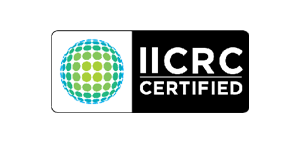Have you ever thought about the hidden signs of fire damage? The image of roaring flames might pop into your mind first. But, the aftermath often tells a story that’s more complex. Fire damage isn’t just about the obvious signs of burning and scorching.
It also includes the subtle signs of heat, smoke, and corrosive elements left behind.
Fire can get as hot as over 1,800 degrees Fahrenheit. This heat can char structures and make drywall so brittle it breaks at 176 degrees Fahrenheit. You’ll see signs like blistering, charring, and ‘heat lines’ where damage changes to safety.
Also, melted mirrors can show that temperatures were high enough to warp them.
Pressurized smoke can leave marks on ceilings and walls, showing where soot and ash moved. These marks, along with bad smells and corrosive residues, can damage surfaces if not cleaned quickly. It’s important to understand these signs to see how a fire really affected a place.
Key Takeaways
- Signs of fire damage include charring, blistering, and heat lines.
- Fire damage is not just about burning but also the effects of heat, smoke, and corrosive residues.
- Temperatures in a fire can go over 1,800 degrees Fahrenheit, affecting materials like drywall.
- Seeing signs like melted mirrors can help figure out how bad the damage is.
- Smoke tracks and bad smells are important signs of fire damage.
Types of Fire Damage
Fire damage is more than just the flames. It can cause many types of damage, affecting how we restore fire damage. Important types include:
- Wet Smoke Residue: This comes from burning plastics and rubber. It sticks to surfaces and smells strong, making it hard to clean.
- Dry Smoke Residue: This is powdery and can be cleaned easily but gets into small spaces. It comes from burning wood and paper.
- Synthetic Fires: These fires make black smoke and sticky soot. They are hard to clean because of the materials like plastics and textiles that burn.
- Protein Fires: These fires start from burning food and leave a greasy, yellow-brown mess. It’s like the grime on cooking appliances and sticks to surfaces.
The type of fire also changes the kind of residue left behind. Fires with little oxygen make a wet, smoky mess. Fires with a lot of oxygen make dry soot. Knowing this helps us clean and restore fire damage better.
Understanding these differences is key to fixing fire damage right.
Understanding the Aftermath of Fire Damage
Fire damage leaves behind more than just visible destruction. It weakens structures due to the intense heat. This heat can make materials warp, crack, or even melt. It’s crucial to have experts check the building’s safety and stability.
Smoke and soot from fires are more than just a mess. They can deeply embed harmful particles and chemicals into materials. If not cleaned quickly, they can damage the building and its contents.
Knowing how fires spread particles and gases is key to fixing the damage. Experts use this knowledge to find hidden damage and clean it up. They must be thorough to remove harmful residues that can be hidden.
Dealing with fire damage requires specific methods for different types of soot and residue. Experts with the right tools and knowledge are vital. They work to fix the building and improve air quality, keeping people safe and healthy.
Smoke and Residue Damage
After a fire, smoke and residue cause big problems. These come from many materials that burn, leaving behind different residues. Soot, a fine particle from fires, sticks to surfaces and can get into HVAC systems, spreading throughout a building. This means we must work hard to clean up all the smoke damage.
Smoke is also acidic, which makes it hard to clean. It leaves a harmful layer on furniture, walls, and more. To remove this, we use HEPA vacuums, special sponges, and strong detergents. These tools are key in fighting soot damage, keeping the property and its contents safe.
But there’s more to fix than what meets the eye. Fires can melt adhesives or warp objects with intense heat. For historic buildings, we need a careful plan to save important parts. This shows how complex and important it is to fix smoke and residue damage right.





